ECO-FARMING AND KRATOM
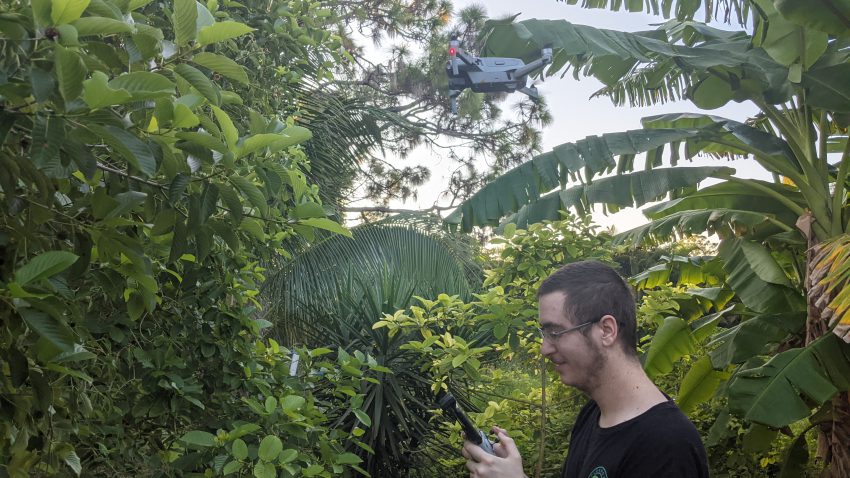
ECO-FARMING AND KRATOM
ECO-FARMING AND KRATOM – Kratom trees, known scientifically as Mitragyna speciosa, are tropical evergreen trees in the coffee family. They grow naturally in rainforests throughout Southeast Asia. The leaves of the kratom tree have both traditional and modern significance for homeopathic medicine.
Kratom was first introduced to Western society in the 1990s but only took hold as an ethnobotanical supplement in the last decade. One potential draw for kratom’s recent rise in popularity? Sustainable, ecological farming practices, otherwise known as eco-farming.
Sustainable farming practices are vital for the continued health of our global ecosystems, including international food economies. Because of this, kratom and eco-farming practices could set the international gold standard for responsible agriculture.
And if this feels like a lot of environmental mumbo-jumbo, don’t worry! Eco-farming can be broken effectively down into seven principles, and they’re quite simple:
The Seven Basic Principles of Eco-Farming
- Crop Sovereignty: people, not corporations, should control crops like food and herbal medicines; producers and consumers should determine how our crops are produced.
- Reward Rural Livelihood: eco-farming creates healthy rural development; this, in turn, creates crop security and fights poverty.
- Smarter Agriculture: sustainable farming practices can create higher yields over time.
- Biodiversity: opting for diverse crops instead of monoculture crops like corn or soy can protect nature; biodiversity allows people to use seasonal plants at cheaper costs.
- Sustainable Soil: ecological farming creates healthier soil; eco-farmers often refrain from chemical inputs like insecticides, which can contaminate the environment.
- Pest Protection: eco-farming creates pest-resistant soil, allowing farmers to control pests and weeds without chemical inputs.
- Food Resilience: diverse and resilient crops, not monoculture crops, offer more protection from natural resource-related market changes; this creates stable crop economies, both locally and transnationally.
Think of this as your guide to eco-farming. If an agricultural practice meets these guidelines, consider it beneficial to eco-farming. Now, let’s see how kratom farming stands up to these seven principles!
Do Kratom and Eco-Farming Go Hand-in-Hand?
Eco-farming sounds great in theory: farmers and consumers hold more power over the food chain, and farming practices that could potentially contaminate the environment are abandoned in favor of ecological farming techniques. Greenpeace even calls eco-farming the combination of “modern science and innovation with respect for nature and biodiversity.”
However, critics say that eco-farming has to mesh well with reality. If ecological farming practices don’t make sense economically, they should be modified in favor of a more profitable system.
But remember when we said kratom could set the gold standard for eco-farming practices? This plant is a shining example of how to incorporate eco-farming into the modern agricultural fold. In fact, kratom meets all seven principles of eco-farming– not in theory, in reality. Here’s how:
(1) Kratom Allows for Crop Sovereignty
Kratom Spot sources their kratom from small family farms throughout Southeast Asia. In regions like Indonesia, kratom trees grow wildly in the rainforests and jungles. These tropical reserves offer rich, nutrient-dense soil without the need for chemical inputs like soil supplements or herbicides.
Here, kratom farmers and consumers control the supply, not corporations. The people have farmed kratom trees for generations. With that experience, they’ve learned how to use eco-farming practices in a sustainable, farmer-controlled setting.
(2) Kratom Rewards Rural Livelihood
The natural kratom trees in Southeast Asia bring employment opportunities, ecological advancements, and global trade opportunities to rural farmers in Southeast Asia. Not only do kratom consumers overwhelmingly support eco-farming practices, mass-farming techniques might yield lower-quality kratom. As such, kratom farmers can maintain their traditional farming practices in an era of technological agricultural advancement.
(3) Kratom is Smarter Agriculture
This is where kratom sets a decisive eco-farming example. Kratom is farmed using a variety of sustainable techniques, such as decentralized cultivation and selective pruning.
Decentralized cultivation means this: kratom farming does NOT rely on clear-cutting forests for farmland. Instead, kratom farmers use both wild growth and small, family farms to supply kratom leaf harvests. This allows native regions to maintain local biodiversity while still profiting from a major agricultural trade product. Biodiversity is vital to Southeast Asia, a region that accounts for an estimated 20 percent of all biodiversity on the planet!
Selective pruning, much like decentralized cultivation, allows for sustainable farming techniques that do not degrade local environments. It works like this: knowledgeable kratom farmers harvest only the leaves needed for the harvest. They do not harvest entire kratom trees at once. Selective pruning has many benefits:
- Only the mature leaves of the desired vein color are harvested.
- The kratom tree is left healthy and unharmed, continuing to grow new leaves.
- The kratom tree is left with the ability to feed new growth and existing growth, creating higher yields over time.
(4) Kratom Promotes Biodiversity
We’ve already mentioned that kratom aids in the maintenance of biodiversity in Southeast Asia. But what else defines the relationship between kratom farming and biodiversity?
For starters, because kratom trees are often grown using decentralized cultivation, wildlife habitats are maintained. Decentralized agriculture, an eco-farming practice, allows us to preserve the diverse habitats of the rainforests. Taken from a past Kratom Spot article:
Animals are part of a delicate natural balance that has already been disrupted in some areas by human encroachment.
But preserving biodiversity goes beyond animal habitation. Biodiversity can shield waterways from nitrogen pollution, improve air quality, and even support human health in various ways.
(5) Kratom Contributes to Sustainable Soil
The rainforests of Southeast Asia do not need chemical fertilizers, insecticides, herbicides, or any chemical inputs that risk damaging soil health. Yes, we know that some chemical fertilizers are “safe” when used properly in industrial settings. However, they must also be removed from consumer-grade products before sale. This isn’t always the case. Furthermore, these toxic chemicals can leach into groundwater and create rippling environmental effects.
But when you practice eco-farming, you don’t even need to worry about chemical inputs– they’re not there! Instead, the soil naturally cycles nutrients from the local flora and fauna.
(6) Kratom Contributes to Natural Pest Protection
As we learned above, kratom trees contribute to healthy soil and biodiversity. In turn, this creates natural pest control! You can thank eco-farming for that: avoiding chemical inputs can protect local insect populations. For example, chemical insecticides risk killing both good and harmful insects.
Good insects eat pests and support biodiversity. Furthermore, because kratom grows in tropical rainforests’ rich, nutrient-dense soil, they are extremely resilient to pest pressure. If we focused on soil health in the United States instead of sheer profitability, our crops could potentially evolve the same.
(7) Kratom Offers Crop Resilience
Kratom farmers use selective pruning, so kratom trees stay intact year-round. This offers the final guideline for eco-farming: crop resilience! Kratom is extremely resilient as it can be harvested year-round under the correct conditions. When trees are left whole, and only necessary leaves are harvested, kratom farmers know that they’ll always have a kratom harvest to look forward to.
Non-eco-farming practices, such as growing monoculture crops like corn in nutrient-lacking soil, can ruin the soil and make farming impossible for generations. On the hard, kratom’s sustainable farming methods will leave kratom trees growing for generations in the same soil we see today.
How Does Kratom Set an Eco-Farming Example
Kratom farmers are well aware of the benefits of eco-farming– they experience them. However, we can, too. We can incorporate eco-farming practices into the United States agriculture sector and enjoy increased biodiversity, increased agricultural profitability, reduce the effects of climate change, and increase our own food supply, reducing poverty.
The benefits of eco-farming go on and on. Sure, it may not be the right move for all agricultural sectors. However, elements of eco-farming – like leaving chemical inputs in the past so they don’t contaminate the environment – should be adopted in favor of more natural choices.
Kratom does not grow naturally in the U.S. But that shouldn’t stop us from using kratom farming as an example for the rest of the world’s agricultural practices. Kratom shows that eco-farming is possible. It’s ecologically possible, economically possible, and possible today! You can do your part to make eco-farming a part of our industries.
Kratom Watchdog Android & IOS

Kratom Watchdog Android & IOS
Have you heard of the Kratom Watchdog app? Kratom Watchdog is a kratom social network built from the ground up by one of the founding member of the non-profit American Kratom Association (AKA). A booming social community with a focus on kratom advocacy. Kratom Watchdog is the oldest kratom social media platform online. With over 400 videos and over 200,000 photo’s from our own kratom Nursery. And 7,000 members we have a very strong growers community that are always willing to help. Kratom Watchdog is available on Android, IOS, and at kratomwatchdog.com. We are a small self funded development studio. If you would like to donate to the development of the platform we would appreciate it. Thank you for your continued support.
![]()
![]()
The Importance Of Quality Kratom
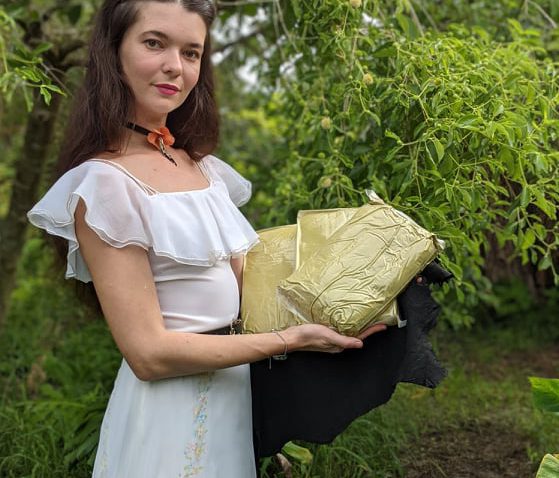
The Importance Of Quality Kratom
The production of kratom involves thousands of farmers, encompasses dozens of strains, and spans over several distinct regions. And although kratom has deep roots in the history of the world, it’s uncertain where the future of the plant may be headed.
However, one thing is for sure –– choosing quality kratom is essential.
At Kratomleaf.us , we’re proud to provide our customers with ethically sourced, premium-grade mitragyna speciosa powder. After importing our kratom directly from Southeast Asia, we utilize strict laboratory testing methods to ensure our highest standards of purity are met. All of our products are sealed air-tight to preserve freshness and maximize customer satisfaction.
Another successful kratom tree pickup! 7/29/2021
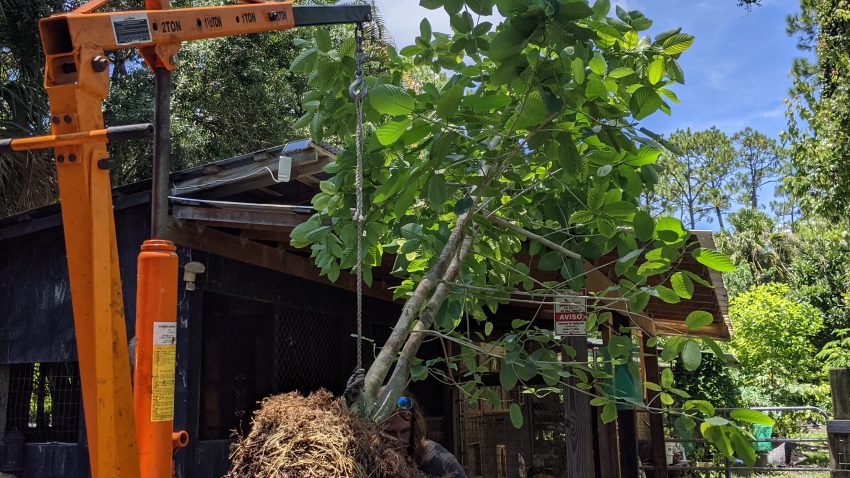
Another successful kratom tree pickup! 7/29/2021
I was told this tree was about 2 years old but I am highly skeptical only because it looks more like a 5 year old tree. Although it is possible. Martha was the previous owner of these trees and she said that she bought them from My trees of life. Thankfully Josh helped us out with his truck and engine lift. Without the engine lift we would not have gotten it into the tuck. The tree ripped apart both our my shoes and will have to be replaced. took us from 10 am to 4 pm to get it moved and planted at the kratom nursery. You can see I tried my best to move it before but it was way to heavy. There are 2 other trees I need to pick up
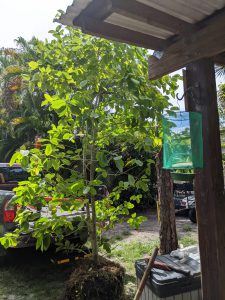
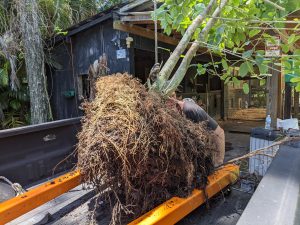
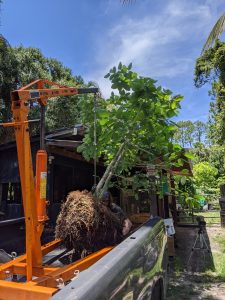

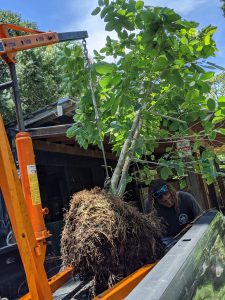

Kratom Seed Pod Documentation
Kratom Seed Pod Documentation
Fresh ripe Kratom seed pods are taken from 6 – 11 year old kratom trees organically grown in North America. As growers, we have acclimated these magnificent kratom trees to the gulf region of the United States. Growing instructions and support are included for those in all environments. As a reference tool to show as it shows the different parts of the seed pods. Here is a link to our American kratom seed pod dissection.
How many seeds come with my order?
There are hundreds to thousands of kratom seeds per individual kratom seed pod. This is a important distinction as many new growers are confused and assume the entire pod is one seed. As a reference tool to show as it shows the different parts of kratom seed. Here is a link to our American kratom seed pod dissection.
How viable are the kratom seed pods?
Just like any other seed pod with a high number of seeds included in its pods. Kratom seed has a smaller viability rate. This is due to how the trees are grown in nature and the trees genetics. The idea is that more seed the more possible plants. Our seed pods get around 15 sprouts per 1/4 of a single seed pod at their most viable state.
How to sprout Seed Pods! And answering commonly asked questions!
If this is your first time growing from seed pods our team recommends you spend a few minuets to watch this educational video. These seed pods were planted in March 2019 – June 2019 kept outdoors in very hot and humid conditions while being covered in clear plastic wrap.
How do you collect Kratom Seed Pods?
Kratrom trees take many years to mature. Because of this they can be quite tall making them hard to reach and pick seed pods directly off a tree. A single kratom tree can grow to over two hundred feet tall. This particular tree below is 25 ft tall. It wasn’t to quick before using a ladder alone would not be enough. We then cut the seed pods directly off the tree.
Our dedicated team have had to make choices on the most efficient and effective way to bring them down. A big factor that plays out over time is how we grow the trees. If we top our taller trees they will start to bush out more near the bottom. A good portion of the seed pod development happens at the top of a tree. We have built a Kratom Seed Pod collector as a solution. This collector is built our of PVC with a comb attached to the end. The pods then fall down to our collection bin at the end of the tubing.
How are kratom seed pod fertilized?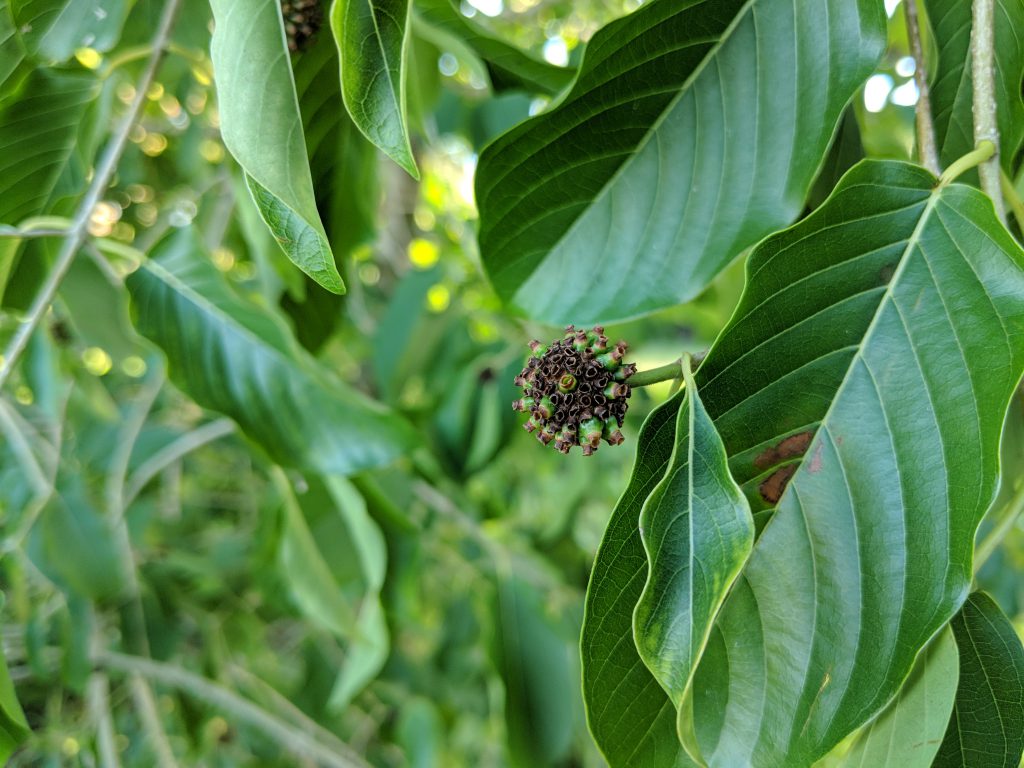
Kratom seed pods from the nursery are confirmed to have at least 60% fertilization. One can assess this by the projections (pods) erupting from the circular flower bulb. These continue to grow until they are mature. Once kratom seed pods are ready to release seed, the seed pod husk bursts open. Kratom seed are quite small and light. The seed will blow all over out of the kratom trees that start to grow once they are one the ground and the ground is moist.
Bees and other insects are attracted to the pungent sweet smell of the kratom seed pods as they develop on the kratom trees. For that reason bees rub themselves on the stems of the exposed seed pods as they travel around the seed pod collecting the pollen in their fur as they go. While they travel from kratom tree to kratom tree the collected pollen rubs off onto the other seed pods that the bees land on. As a result this fertilizes the kratom seed pods.
Are you able to hand fertilize seed pods?
On the other hand, each seed pods is to hand fertilize by staff. As well, a staff member will climb up on the ladder and grab what ever seed pods are close and rub them against each other. Turning them and spinning them in our hands to get the maximum effect. This ensures the viability of the seed pod.
Organic American Kratom Leaf is available here for purchase.
How To Tell A Fertile Kratom Seed Pod?
Each seed pod have very distinct difference between a fertile seed pod and a inftertile pod. Fertile kratom seed pods will be plump in contrast to infertile pod that are smooth and round. For that reason, make sure to be careful if you want a full pod to stay intact as they break apart from the center very easily. Most notably, this video shows every stage of a kratom seed pod.
What do infertile kratom seed pods look like?
Lastly, a infertile seed pods are completely round and are very very tiny. They will almost look like a honeycomb in a ball. Infertile kratom seed pods are very soft and will roll around in the hand. In contrast, there is not much that can be done with these pods. Here is a short video to show you what they look like.
How do I sow kratom seed pods? What soil should I use?
Thankfully, kratom do not require any particular type of soil to grow. Your average potting soil will be fine. When you go to lay your seed, crush up the seed pods in your hand. The seed will break away easily. Sprinkle the seed on your container.
Other good posts
https://kratomwatchdog.com/topic/4509/pollinators
Rooted Kratom Cutting Documentation
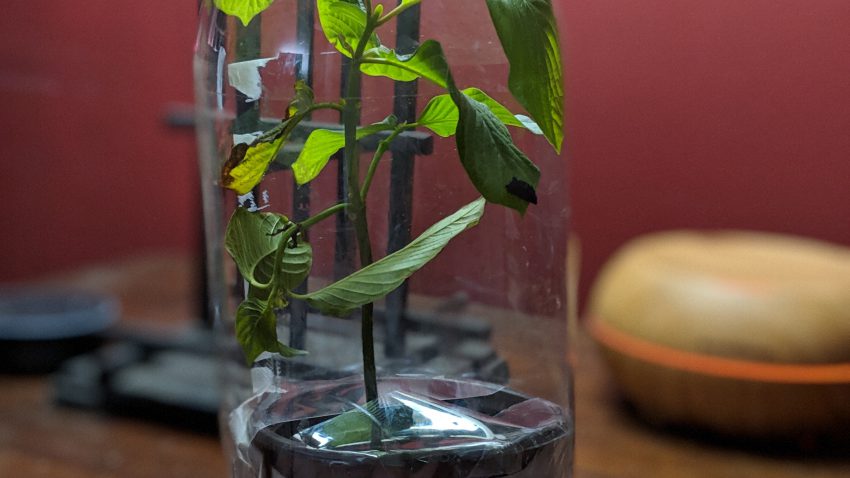
Rooted Kratom Cutting
Our lush cuttings come from our American nursery. We treat all of our tea cuttings with the love and care they deserve. Our cuttings come from fully established fully mature 5 – 11 year old trees. You can try the leaf from the trees your very cutting came from right now.
Some things to mention about a Kratom Cutting
Something to keep in mind is it is important to not grow these plants like other types of plants. For example these are not tomatoes and will not thrive in the same conditions tomatoes grow in. These Kratom cuttings are rain forest trees. Kratom trees require high heat, high humidity, and lots of water. Please do your research and ask questions. A great resource to use is our #kratomAPP KratomWatchDog.
Here is a fertilizing recommendation write up one of our customers posted on kratomwatchdog.
How long does it take for a kratom cutting to mature?
A Kratom cutting can take any about 5 years to mature. Although current research has been showing that kratom trees actually start to produce mitragynan when they are little cuttings just the amount of mytragynan is so low that is noticeable.
Kratom Vein Colors
The color of a kratom vein are determined by the content of mytrogynan (alkaloids) in the vein. The purpose of producing mytrogynan is to protect the tree from insects and animals from eating the leaf. Its also a stress mechanism. The mytrogynan is why the leaf is so bitter and correlates to strength. Strength also correlates to how mature the leaf is. The more mature the leaf the stronger it will be. When mature leaves mature the alkaloids are sucked back into the tree thru the veins. These leaves will look more yellow. The Kratom Bible is also available here on the #kratomAPP
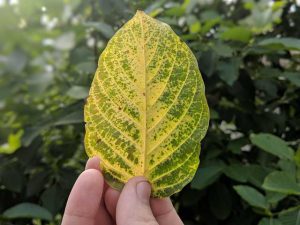
The more alkaloids in the vein. The more red the vein will be. Purple at the high end of alkaloids. White at the low end of alkaloids. It is possible to see all vein colors grow at the same time on the same tree. (pink,red, purple) more near the bottom as that is where they have roots as that’s where most of the nutrients are. Up the tree will be more (greens and whites). They start getting more color variation the larger they get.
Fresh Kratom Leaf – Buy Fresh USA Kratom Leaf
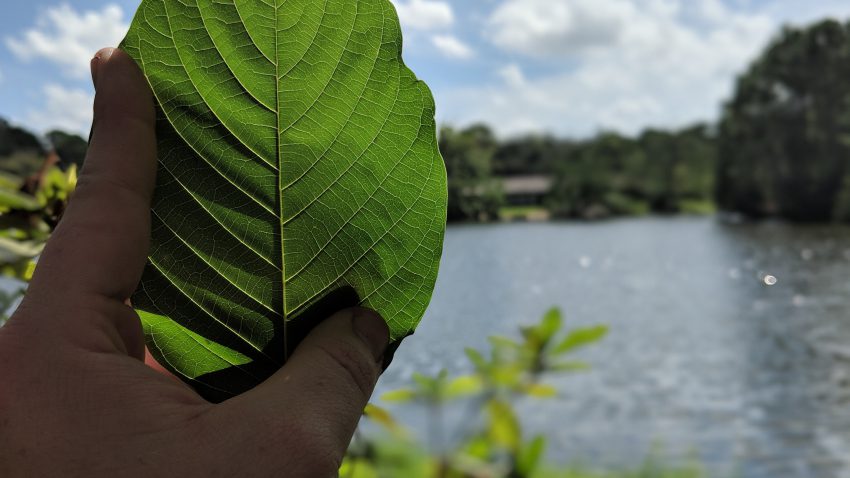
Fresh Kratom Leaf
Fresh Kratom Leaf- As with the changing of the season. We are coming to the end of Winter and turning into spring. The leaf is now at it’s at it’s most mature, after being subjected to the reduced rain fall of the dry season. It really doesn’t get better than this folks. Mature leaf is known to be bitter, and this is no exception. Best enjoyed with honey or sugar!
We are the only kratom vendor online that offers fresh leaf from fully mature kratom trees. Whole kratom leaf is only available when the trees are flowering, and all of our leaf is picked from trees varying in age from 5 – 11 years old. Each leaf is picked to ship, for freshness we recommend you select 2 day shipping. Your leaf will keep for around eight days in the fridge or 3 – 4 days at room temperature in a sealed bag. Can be air dried to preserve the leaf at which point it can be stored like your typical leaf or powder.
Kratom – The sweet treat of The South East
When the natives in South East Asia have a sore throat they will go out in the fields and pick some fresh leaf off of the trees. Placing some sugar in the center and then chew on the leaf. When they chew the leaf the sugar mixes with the fresh leaf and becomes sort of like a tasty paste. This paste will retain its sweet taste all the way through. This helps relieve sore your throat and makes the day much more bearable. Below we have written a guide to show you how.
Step 1: Pick some fresh leaf off of your tree. Any leaf will do but we recommend using larger leaves as they are easier to work with.
Step 2: Add sugar to the center of your Kratom Leaf
Step 3: Roll up your Fresh Kratom Leaf and enjoy! Chew the leaf for 3-5 min and either spit or swallow.
How should fresh kratom leaf be stored?
Each fresh leaf is picked to ship. For the Freshness we recommend you select 2 day shipping. Your leaf will keep for around five to seven days in the fridge or three to four days at room temperature in a sealed bag. Leaf can be air dried to preserve the leaf at which point it can be stored like your typical leaf or powder.
Brewing Kratom Tea with Fresh Kratom Leaf
Step 1: Prepare your pot and water. Bring a pot of water simmering boil.
Step 2: While your pot reaches temperature. Chop up 30 fresh kratom leaf.
Step 3: Once your pot is at a simmering boil add your fresh leaf to the pot.
Step 4: Add 4 table spoons of lemon juice
Step 5: Boil your leaf for 35 minutes.
But wait! Do not throw out the leaf yet! You can reuse that leaf to make another pot or two. Enjoy
If you would prefer crushed leaf. Our nursery does offer crushed leaf here!
What are kratom vein colors?
The color of a kratom vein are determined by the content of mitragynine (alkaloids) in the vein. The purpose of producing mitragynan is to protect the tree from insects and animals from eating the leaf. It’s also a stress mechanism. The mitragynan is why the leaf is so bitter and correlates to strength. This is why more mature leaf is more bitter then fresh leaf. When kratom leaves mature the alkaloids are sucked back into the tree through the veins. These leaves will look more yellow.

In winter you see mostly white and green with some red. Spring, mostly green, white, some red, with pink starting to show up. In summer, Seed pod are popping up, you see green, white, pink, red, purple. This continues to happens thru Fall. We should note seed pods are best to pick off the tree in Jan – April. Kratom Vein colors usually have its darkest vein color at the exterior of the plant. Getting lighter as you go inward. But is harder to see in summer – fall as all colors are on the tree. Want to know more? The Kratom Bible is also available here on the #kratomAPP
The more alkaloids in the vein. The more red the vein will be. Purple at the high end of alkaloids. White at the low end of alkaloids. It is possible to see all vein colors grow at the same time on the same tree. (pink, red, purple) more near the bottom as that is where they have roots as that’s where most of the nutrients are. Up the tree will be more (greens and whites). They start getting more color variation the larger they get.
Mature Kratom Leaf?
Mature Kratom Leaf has been sitting on the trees for months before it is picked. Kratom leaf matures over time and as the leaf ages it becomes stronger. This is kratom leaf’s normal life cycle. You can tell a mature leaf will show signs of aging. Edges of the leaf will be a bit more weathered. Leaf that has been further along in the season will have a more yellowish color to the leaf.
How do you de-veining kratom leaf?
What is de-veining? De-veining is taking the main stem that runs thru the kratom leaf and extracting the vein out of the leaf. Veins can be chewy and do not break down as easily while chewing.
How is Mature Kratom Leaf Traditionally Eaten?
In the fields of Indoneasia workers will traditionally fresh raw kratom leaf is chewed orally. Over the course of the day. Traditionally Indonesian farmers will chew 2 – 5 leaf over the course of the day for increased stamina.
How much does fresh kratom leaf weigh?
We get this question often asking how much does Fresh Leaf American Kratom weigh? So we decided to make a short video to show you the differences. Most fresh leaf is equivalent to around .8 grams – 1.2 grams wet. When dried, kratom leaf does not loose a majority of it’s weight maybe a .1 grams to .2 grams.
How long should I expect Shipping to take?
All Kratom leaf will only ship out Monday – Wednesday. Customers can select either 2 -day Priority USPS Mail or expedited Shipping. Our friendly staff members will ship out your normally by 2 pm. Each order will receive a notification and tracking number once the order goes out. Before contacting our staff we recommend that you check your email and spam filter encase you might have missed us. Our staff can be reached at our Email us. A member of our helpful staff would be more than happy to talk with you anytime.
What happens if there is an issue with you order?
We guarantee to get to your leaf to your door healthy and green. But, sometimes things can happen. If there is ever an issue with your order please contact our team immediately. We ask that you email us at kozykratom@gmail.com it is helpful if you also include a photo of the situation. Our helpful staff will try to respond within the hour.
Mature Kratom Leaf – Buy Raw Fresh American Kratom Leaf
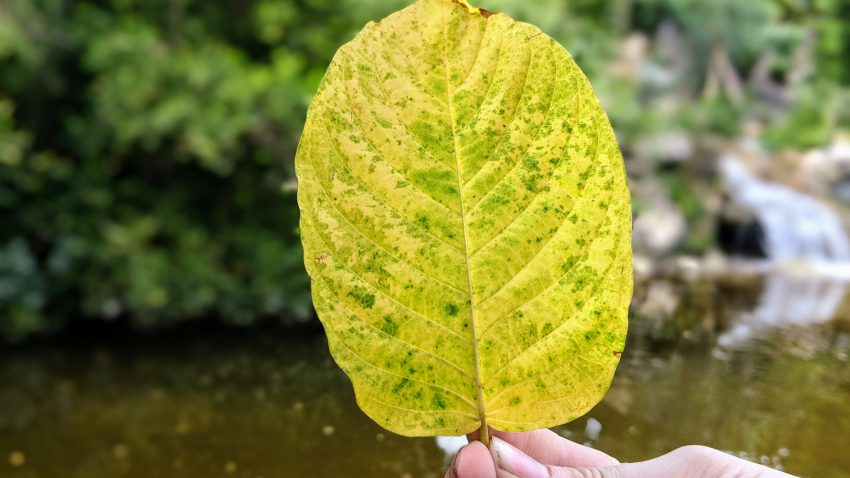
Mature Kratom Leaf – Buy Fresh USA Kratom Leaf
As with the changing of the season. We are coming to the end of Winter and turning into spring. The leaf is now at it’s at it’s most mature, after being subjected to the reduced rain fall of the dry season. It really doesn’t get better than this folks. Mature leaf is known to be bitter, and this is no exception. Best enjoyed with honey or sugar!
We are the only kratom vendor online that offers fresh leaf from fully mature kratom trees. Whole kratom leaf is only available when the trees are flowering, and all of our leaf is picked from trees varying in age from 5 – 11 years old. Each leaf is picked to ship, for freshness we recommend you select 2 day shipping. Your leaf will keep for around eight days in the fridge or 3 – 4 days at room temperature in a sealed bag. Can be air dried to preserve the leaf at which point it can be stored like your typical leaf or powder.
Kratom – The sweet treat of The South East
When the natives in South East Asia have a sore throat they will go out in the fields and pick some fresh leaf off of the trees. Placing some sugar in the center and then chew on the leaf. When they chew the leaf the sugar mixes with the fresh leaf and becomes sort of like a tasty paste. This paste will retain its sweet taste all the way through. This helps relieve sore your throat and makes the day much more bearable. Below we have written a guide to show you how.
Step 1: Pick some fresh leaf off of your tree. Any leaf will do but we recommend using larger leaves as they are easier to work with.
Step 2: Add sugar to the center of your Kratom Leaf
Step 3: Roll up your Fresh Kratom Leaf and enjoy! Chew the leaf for 3-5 min and either spit or swallow.
How should fresh kratom leaf be stored?
Each fresh leaf is picked to ship. For the Freshness we recommend you select 2 day shipping. Your leaf will keep for around five to seven days in the fridge or three to four days at room temperature in a sealed bag. Leaf can be air dried to preserve the leaf at which point it can be stored like your typical leaf or powder.
Brewing Kratom Tea with Fresh Kratom Leaf
Step 1: Prepare your pot and water. Bring a pot of water simmering boil.
Step 2: While your pot reaches temperature. Chop up 30 fresh kratom leaf.
Step 3: Once your pot is at a simmering boil add your fresh leaf to the pot.
Step 4: Add 4 table spoons of lemon juice
Step 5: Boil your leaf for 35 minutes.
But wait! Do not throw out the leaf yet! You can reuse that leaf to make another pot or two. Enjoy
If you would prefer crushed leaf. Our nursery does offer crushed leaf here!
What are kratom vein colors?
The color of a kratom vein are determined by the content of mitragynine (alkaloids) in the vein. The purpose of producing mitragynan is to protect the tree from insects and animals from eating the leaf. It’s also a stress mechanism. The mitragynan is why the leaf is so bitter and correlates to strength. This is why more mature leaf is more bitter then fresh leaf. When kratom leaves mature the alkaloids are sucked back into the tree through the veins. These leaves will look more yellow.
In winter you see mostly white and green with some red. Spring, mostly green, white, some red, with pink starting to show up. In summer, Seed pod are popping up, you see green, white, pink, red, purple. This continues to happens thru Fall. We should note seed pods are best to pick off the tree in Jan – April. Kratom Vein colors usually have its darkest vein color at the exterior of the plant. Getting lighter as you go inward. But is harder to see in summer – fall as all colors are on the tree. Want to know more? The Kratom Bible is also available here on the #kratomAPP
The more alkaloids in the vein. The more red the vein will be. Purple at the high end of alkaloids. White at the low end of alkaloids. It is possible to see all vein colors grow at the same time on the same tree. (pink, red, purple) more near the bottom as that is where they have roots as that’s where most of the nutrients are. Up the tree will be more (greens and whites). They start getting more color variation the larger they get.
Mature Kratom Leaf?
Mature Kratom Leaf has been sitting on the trees for months before it is picked. Kratom leaf matures over time and as the leaf ages it becomes stronger. This is kratom leaf’s normal life cycle. You can tell a mature leaf will show signs of aging. Edges of the leaf will be a bit more weathered. Leaf that has been further along in the season will have a more yellowish color to the leaf.
How do you de-veining kratom leaf?
What is de-veining? De-veining is taking the main stem that runs thru the kratom leaf and extracting the vein out of the leaf. Veins can be chewy and do not break down as easily while chewing.
How is Mature Kratom Leaf Traditionally Eaten?
In the fields of Indoneasia workers will traditionally fresh raw kratom leaf is chewed orally. Over the course of the day. Traditionally Indonesian farmers will chew 2 – 5 leaf over the course of the day for increased stamina.
How much does fresh kratom leaf weigh?
We get this question often asking how much does Fresh Leaf American Kratom weigh? So we decided to make a short video to show you the differences. Most fresh leaf is equivalent to around .8 grams – 1.2 grams wet. When dried, kratom leaf does not loose a majority of it’s weight maybe a .1 grams to .2 grams.
How long should I expect Shipping to take?
All orders will only ship out Monday – Saturday in batches. Each order will receive a notification and tracking number once the order goes out. Before contacting our staff we recommend that you check your email and spam filter encase you might have missed us. You can reach our staff at our email kozykratom@gmail.com or by call/ texting (603)733-4665. We would prefer you send us a text as its easier for our staff to respond to and reference back to in case of future issues. We are available Mon – Sun 8am – 11 pm EST. A member of our helpful staff would be more than happy to talk with you anytime.
Testimonials
https://kratomwatchdog.com/topic/4137/this-morning-i-chewed-one-leaf
https://kratomwatchdog.com/topic/2643/fresh-leaf-customer-review
https://kratomwatchdog.com/topic/2917/received-my-first-order-and-just-wanted-to-say
https://kratomwatchdog.com/topic/4272/so-today-makes-13-days-in-the
https://kratomwatchdog.com/topic/4188/two-more-success-stories-anot
What happens if there is an issue with you order?
We guarantee to get to your leaf to your door healthy and green. But, sometimes things can happen. If there is ever an issue with your order please contact our team immediately. We ask that you email us at kozykratom@gmail.com or call /text us at (603)733-4665. Texting is preferred. It is helpful if you also include a photo of the situation and your order number. Our helpful staff will try to respond within the hour.
Where does the money from your order go to?
We are a small self funded American Kratom nursery. Our team does not take payment for our work. Everything we make goes back into the nursery, Documenting kratom, Our kratom social media platform Kratom Watchdog, Our kratom avatar chat Kynto, and our other kratom advocacy projects.’
3D Drone Mapping American Kratom Nursery’s
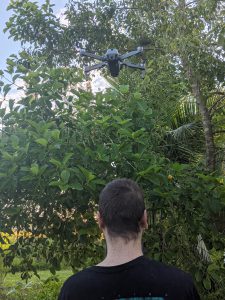
Taking to the sky! Utilizing drones, we are able to document our American kratom nursery’s from a different angle. These drones are able to 3D map our kratom nursery using a technology called LIDAR. Applying these 3D models into our Kratom Avatar Chat Kynto. Our goal is to map out our entire nursery and insert the nursery into the world for users to interact with these trees. Allowing them to take guided or self guided tours. The cool part, is that we can then translate that information into virtual reality (VR). Available on the PlayStation VR, Oculus Platforms, and Google Cardboard.
We will be opening up our tools and software to allow other nurseries and growers to map out their kratom nursery. Interested in having us out to document your nursery? Contact us here or contact us on the Kratom Watchdog app.
Kratom Watchdog Android & IOS

Kratom Watchdog Android & IOS
Have you heard of the Kratom Watchdog app? Kratom Watchdog is a kratom social network built from the ground up by one of the founding member of the non-profit American Kratom Association (AKA). A booming social community with a focus on kratom advocacy. Kratom Watchdog is the oldest kratom social media platform online. With over 400 videos and over 200,000 photo’s from our own kratom Nursery. And 7,000 members we have a very strong growers community that are always willing to help. Kratom Watchdog is available on Android, IOS, and at kratomwatchdog.com. We are a small self funded development studio. If you would like to donate to the development of the platform we would appreciate it. Thank you for your continued support.
![]()
![]()
Unrooted Kratom Cuttings Documentation
Unrooted Kratom Cuttings Documentation
Our lush Kratom cuttings come from our organic American Kratom Nursery. As a U.S. kratom nursery we are focusing on growing kratom and advocacy. Our kratom co-op has a goal to help ensure American kratom as a main source for the United States. Each of our trees branches are pruned almost daily by our friendly staff. We treat all of our kratom cuttings with the love and care they deserve. You can try the leaf from the trees your very cutting came from right now.
Instructions & Guides
Best Method to Root Kratom Cuttings – Water Jug Method
Take your cutting and place it inside of a 1 gallon jug of rain or pond water. DO NOT USE regular store water or water from the tap.
For more information on unrooted kratom cuttings. Check out our WIKI guide.
Rooting
Typically takes up to around 3 weeks for the cuttings to begin to root.
Watering
Add 1 gallon of rain or pond water to your gallon jug. DO NOT USE regular store water or water from the tap. There are chemicals that will kill the plants. Check your water levels once a week. Replace any water that has evaporated from the jug.
Cuttings
You can add as many cuttings to the gallon jug that will hold at the top. However we recommend only a few per gallon. As this will make it easier to inspect and remove your cuttings without damaging any roots on the other cuttings. Roots are quite fragile and will come off easily. If your cuttings do not touch the bottom on the gallon that is fine. You only need 1/3 of the cutting to be above water. Anywhere that the water touches, roots will develop over time.
Lighting Options
Artificial lighting methods allow for quicker rooting. However a South facing window will suffice.
Repotting
Once your cuttings establish roots, you will want to move them to a 3inch pot. Plant the entire pod and rootball in the new pot (potting soil works best). Here are some videos to help you.
Roots
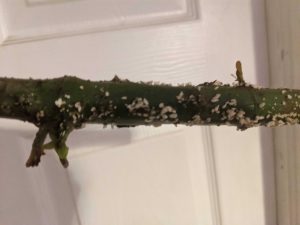
While examining your cutting you will notice that anywhere the water is touching. Any wooded growth will turn into green new growth. After a while in the water it will develop white little bumps. These are roots. They will turn into little white worms. We recommend letting the roots gain a bit of length before placing them in soil.
Note from the grower
Your unrooted cuttings have already been cut back to the freshest node, and covered in rooting hormone.
While in the water jug. The leaf on the cuttings will look droopy. This is normal. This is due the water evaporating.
Peat Pod/ Soil Method (Other Method)
For best results inflate the zip lock bag and place it under a strong indirect light source. We get decent results just relying on a South facing window but see much better results under some sort of bright indirect light (LED, Fluro, HPS). The Kratom Bible is available here on the #kratomAPP
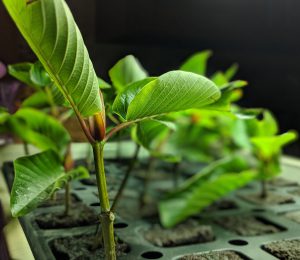
Rooting
Typically takes up to around 3 weeks for the cuttings to begin to root.
Watering
If the ziplock bag stays sealed water loss will be almost nothing. Misting our pouring a table spoon or two of water in there when the pod starts to firm up is recommended.
Lighting Options
Artificial lighting methods allow for quicker rooting. However a South facing window will suffice.
Repotting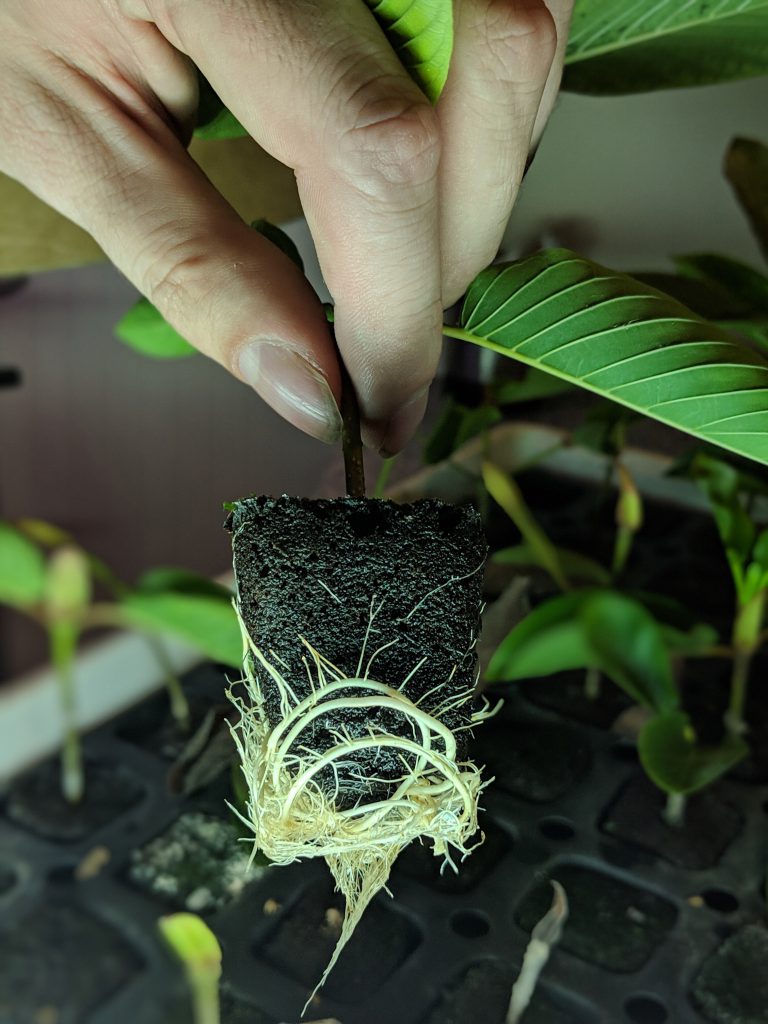
Once your cuttings establish roots, you will want to move them to a 3inch pot. Plant the entire pod and rootball in the new pot (potting soil works best).
Note from the grower
Your unrooted cuttings have already been cut back to the freshest node, and covered in rooting hormone.
How high should the humidity be?
Lastly, we add the cutting to a plastic Zip Lock like bag or you can take them out and put them into a very large plastic container. Regardless of how you are rooting them you need to ensure that the plants are kept in high humidity at all times. Do not leave the cuttings out of the bag for more then 20 min at a time. These plants require 80 – 100% humidity at all times.
Other Growers Tutorials
How often should I water unrooted kratom cuttings?
Customers should leave the plastic bag these cuttings come in sealed at all times they should not be releasing moisture. There should be no need to water these cuttings. In the event the soil medium begins to firm up it is advised to mist or pour a table spoon or two of water. The soil medium should always be moist to the touch at all times. Even one night of a dried up soil medium will kill a plant seeing as they are so young. You can also mist the cuttings with a water bottle.
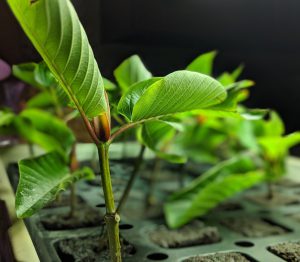
Do I need rooting hormone?
You do not need rooting hormone for cuttings to root. We ship out every cutting with rooting hormone already applied. However if you are going to add rooting hormone we do recommend that you are sparing while applying. If you add to much hormone and cover the cutting it will make it hard for cuttings to produce roots thru the hormone.
How to Guide – Processing Unrooted Kratom Cuttings
Processing Unrooted Kratom Cuttings – How to Guide
Process Unrooted Kratom Cuttings – How to Guide – When we process our kratom cuttings we always follow the same process. First, we take the cutting off the tree and clean the nodes and extra leaf off of each cutting. It is important to note that kratom cuttings do not require leaf on the cutting to produce roots. In fact, having large leaf on a cutting can be a disadvantage as leaf requires larger water consumption from the cutting. This is why we cut our leaf into a triangle shape.
The next step requires adding rooting hormone. We have found that the best way to ensure rooting is to use a lot of rooting hormone. As much as possible. We strive to ensure that each cutting has the highest success rate possible. After adding rooting hormone the next step is to place the cutting in the soil medium. Wither it is peat pods, soil, or peet pods a good soil medium will be required to allow these plants to succeed. You can even grow these plants hydroponically, however we will be providing the rooting medium. If you are planning to grow hydroponically do add more rooting hormone after taking out of soil medium. Buy Unrooted Kratom Cuttings.
How to root kratom cuttings – Another Growers guide
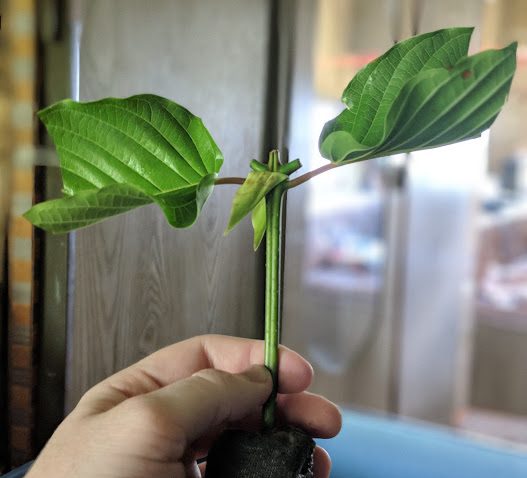
How to root kratom cuttings – Another Growers guide
A guide from another customer
This is a series of pictures I took in which i received 90+ unrooted cuttings and 3 rooted cuttings. I basically knew nothing about plant care before getting in to this, i tried to read a lot and find as much info as i could as I went along. First, I show the three pre-rooted cuttings. I remove most of the rockwool to expose the roots and transfer to a potting mix, perlite, and dried horse poo soil mixture. One of the rooted cuttings died from mold on the roots, as i did not pasteurize/sterilize my horse poo soil component. The next series of pictures shows the process of trimming, scraping, and adding hormone powder to the cuttings. I would find later that scraping was probably detrimental. Another factor that was detrimental was insufficient humidity dome structure. I was overloaded by this many cuttings and struggled for a few days to get the right containers. I left the rockwool cubes alone and just tried to spray them with water. I found out later it is important to soak them in pH appropriate water. Some opt to include fertilizer. I think the high pH of the rockwool, and not realizing how basic my water source was, contributed to failure. Later on, I added small amounts of vinegar to my water for everything. Misting, watering, etc. pH 5.5-6.5, but I didn’t measure except with pH strips occasionally. My tap water is approx. 7.1-7.4. I discovered later that a more effective method with rockwool cubes is to set them on top of at least 2 inches of perlite. It helps to soak up water and retain moisture. Even burying them 50-75% can help, but make sure there is a drainage layer. The last pictures show the successful cuttings, their roots, rockwool separation, and perlite roots. The ones that didn’t root were cut down to the node, repowered with hormone, then placed in ~4in of perlite. It is important to have perlite deep enough to prevent the cutting end from soaking. I used miracle grow perlite. the successful cuttings reached to the bottom where there was water full of fertilizer from draining the perlite, and the newest growth and roots partially turned red. Someone on reddit said this was genetic, but I think it is some type of excess fertilizer symptom. Phosphorus, maybe. While i think the fertilizer enhanced rooting, plain perlite would probably be fine. I also think 25-50% coconut coir with perlite would be an effective rooting medium. My first three cuttings were in peat pods. I added some perlite in the middle of the pod because i saw a picture of some gnarly roots in a perlite cup. I sat the cutting and pod on perlite and put it in a plastic shoebox inverted on another one. All three cuttings rooted. They had plenty of canopy space with no crowding, and i kept the light on for 24hrs for about 3 days. I think maximum light helps cuttings root. Enjoy the pictures, message me for more info or just to talk! More will come later when the rest of them root.
How to grow kratom cuttings – A guide from a customer
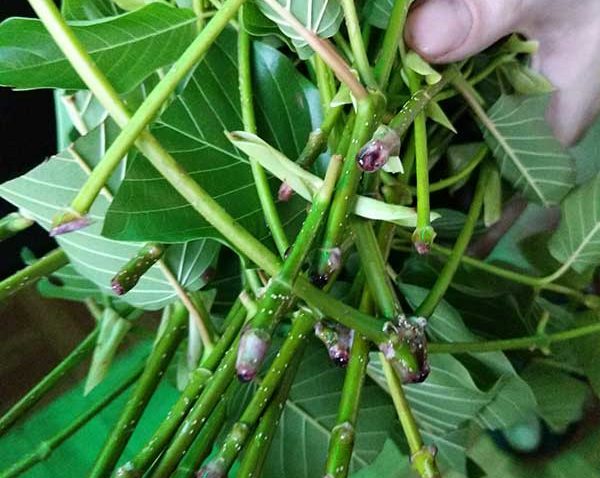
How to grow kratom cuttings – A guide from a customer
How to grow kratom cuttings – A guide from a customer – “I have a grow tent on an 18hr per day 300W LED schedule. They took about three weeks to root, and they went from now roots to tons of roots in like 2 days.
I put them in small pots about that size and all of my plants are in Fox Farms Ocean Forest and get fertilized with their liquid fertilizer 1x per week. I use ceramic watering devices to give my plants a steady drip of water, and I mist about 2x daily. The tent also has a humidifier running 24/7 so they are staying at like 80% humidity and >= 75 F at all times. “
Setup instructions
It is important to note to make is: Do not grow these plants like other types of plants. For example these are not tomatoes and will not thrive in the same conditions tomatoes grow in. These Kratom cuttings are rain forest trees. Kratom trees require high heat, high humidity, and lots of water.

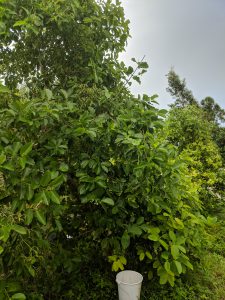
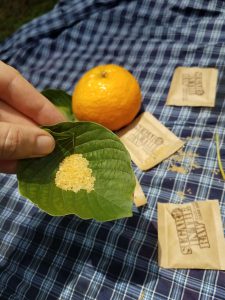
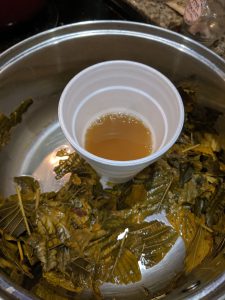
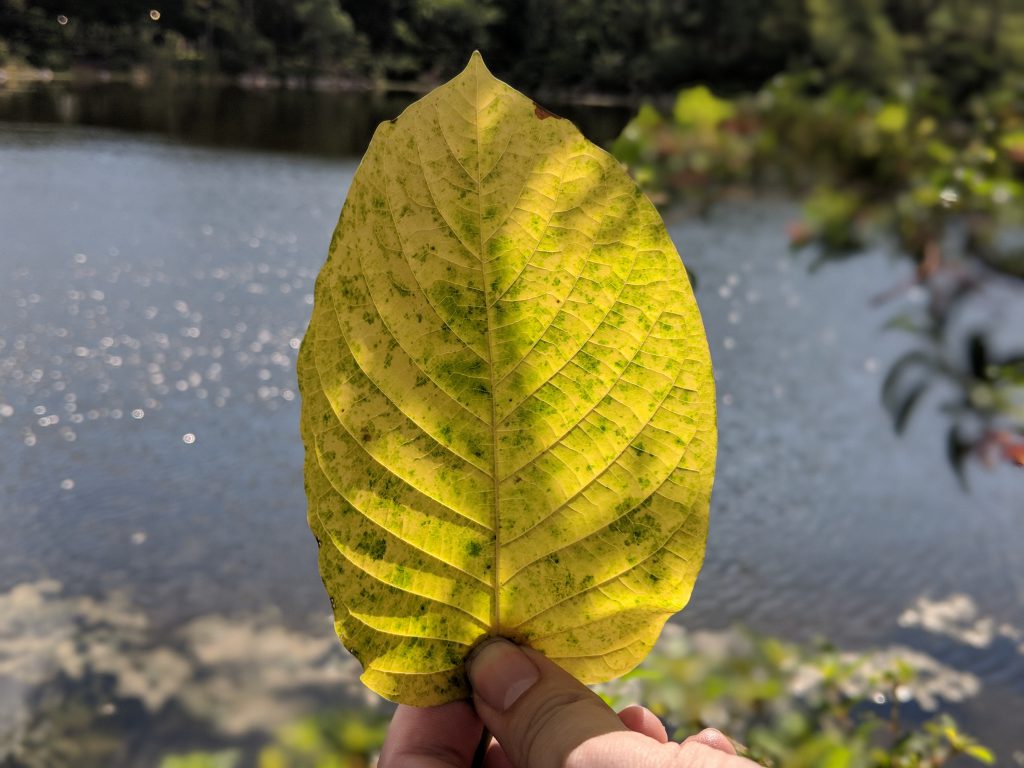
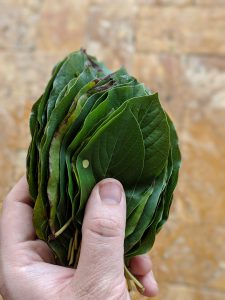
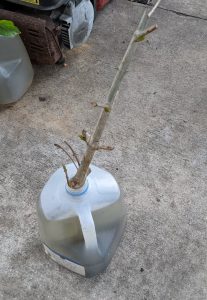

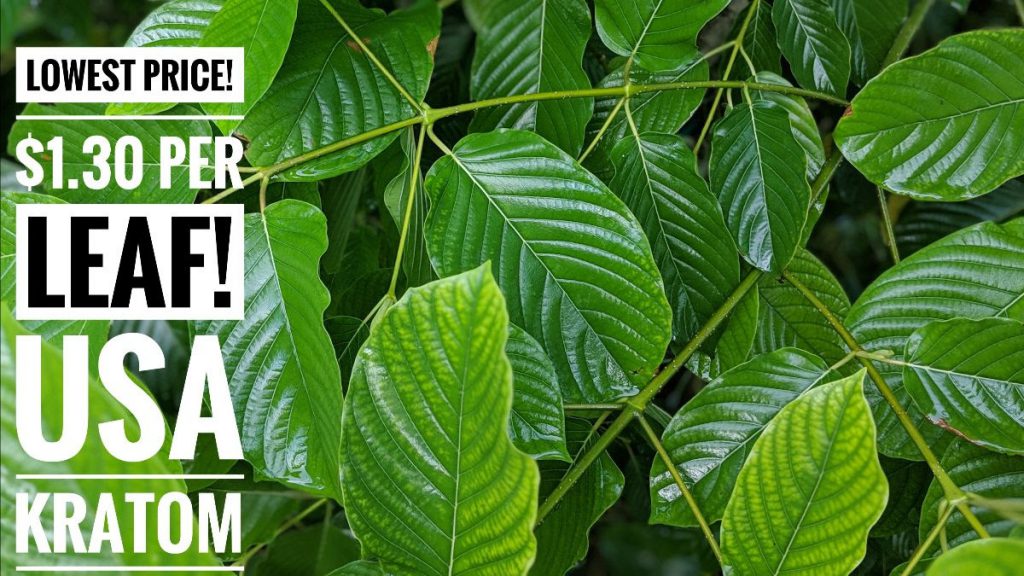
Recent Comments